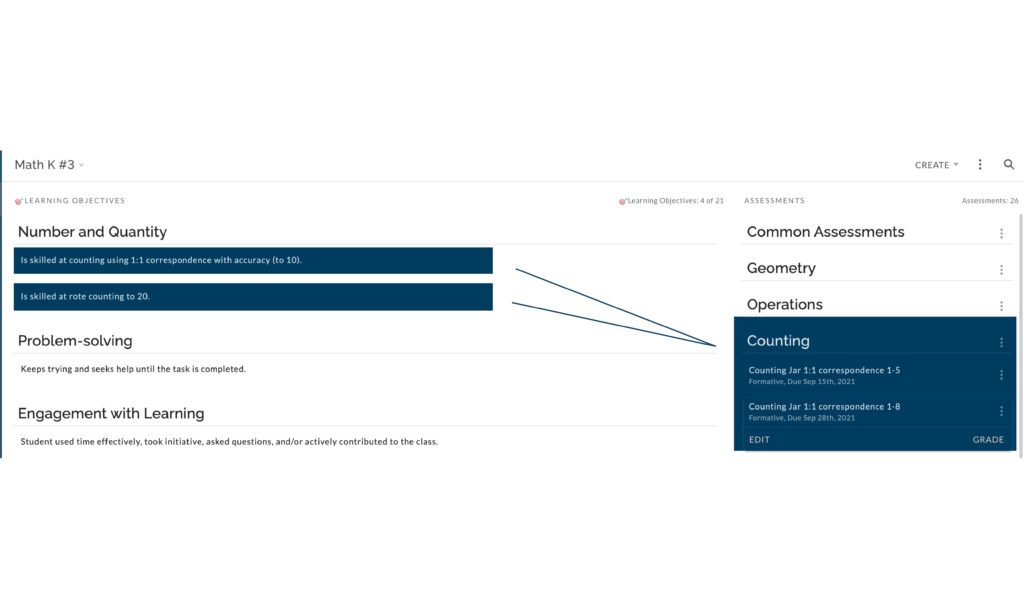Formative and Summative Assessments
Building assessment into our daily and weekly plans allows us to collect data that informs our teaching practice and helps us determine student mastery of learning targets.
Assessments fall into several different categories. This blog post on Classroom Assessment distinguishes checks for understanding (CfU), diagnostic or pre-assessment, formative assessment, and summative assessment from one another. In brief, summative assessment takes place at the end of some unit of learning. Summative assessment is the assessment of learning.
Every other assessment form named above occurs before or during the learning process. Therefore, they require that we consider student progress and collect and analyze data to improve learning. As discussed in the post mentioned above, there are many ways to collect formative assessment data, but the key is to collect it.
Practice-Software Tip #3 addresses the idea of mapping assessments so teachers can see how frequently during a school year they assess each target. Assessment mapping helps us with long-range planning as we try to adequately assess each target across the school year.
There are also moments in an instructional sequence, when it just becomes clear that it’s time to collect some formative data. In designing those more impromptu formative assessments, we still need to know which targets we’re aiming for.
How does the JumpRope software support you in this process?
Below is a view in JumpRope that allows teachers to see which assessments are aligned with specific standards and indicators. When the teacher clicks on an assessment, for example, Counting Jar, 1:1 correspondence 1-8, the standards and indicators aligned with that assessment appear on the left side of the screen.

In this case, the standard is Number and Quantity, and the indicators are Is skilled at counting using 1:1 correspondence with accuracy (1-10) and Is skilled at rote counting to 20. This view enables the teacher to quickly determine exactly which concepts an assessment addresses.
JumpRope users can see the relationship between targets (standards and indicators) and assessments. They can do so by viewing which assessments address which targets, or they can do so by viewing which targets are aligned with each assessment.
If you’d like to learn more about how JumpRope can help you in the assessment process, reach out today for a discussion.

